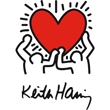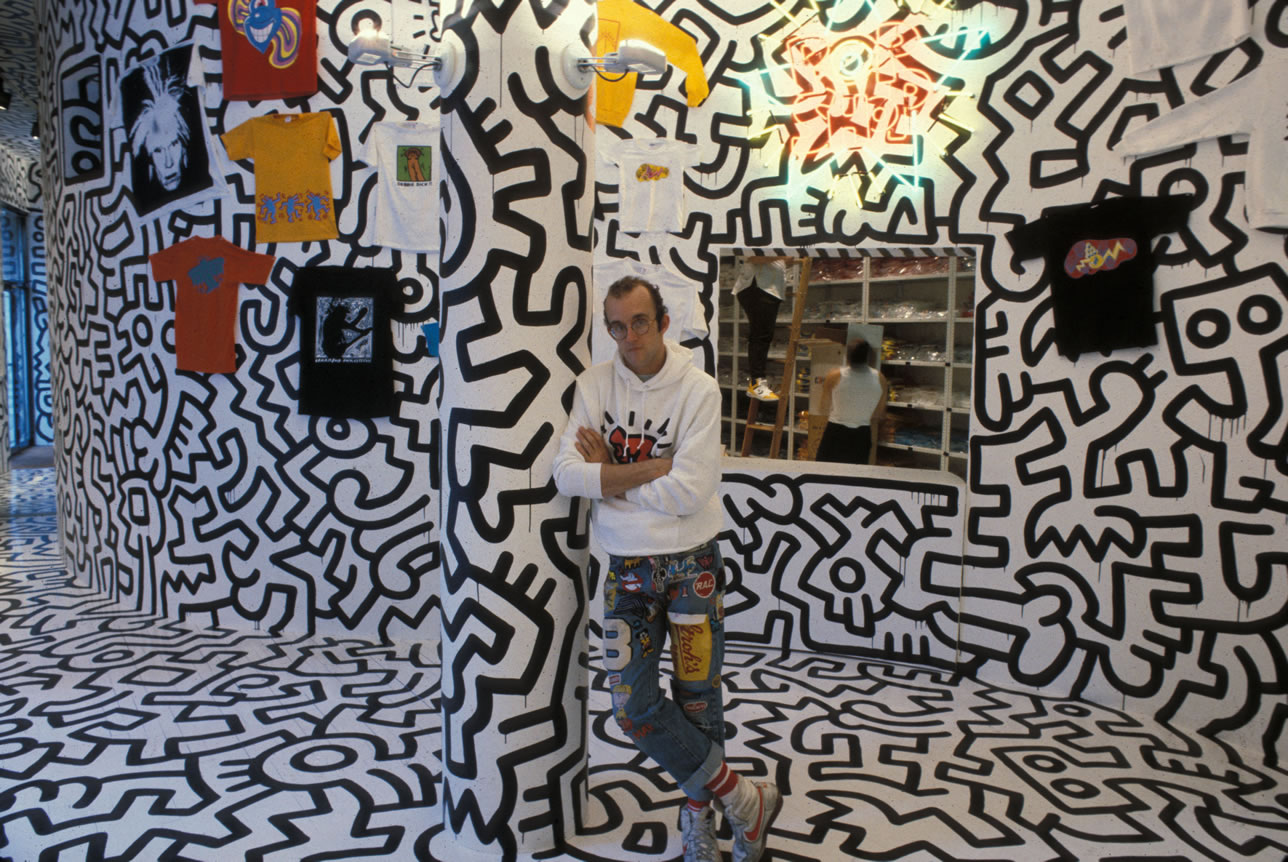Bio
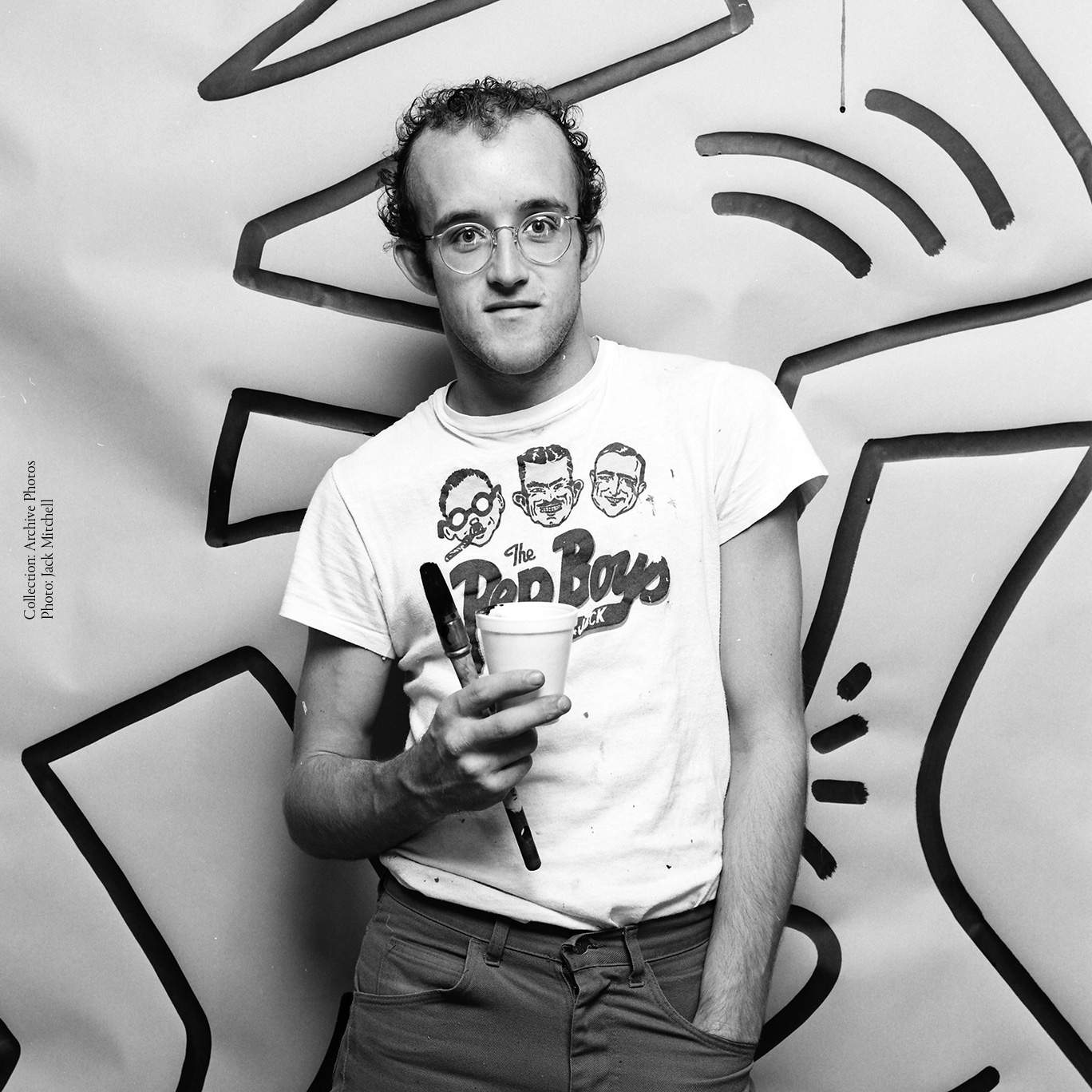
Keith Haring biography
Keith Haring's birth
Keith Haring was born in Reading, Pennsylvania on May 4, 1958, and grew up in nearby Kutztown. He developed a love for drawing at a young age and learned basic comic book techniques from his father and the popular culture around him, such as Dr. Seuss and Walt Disney.
Keith Haring's school career
After graduating from high school in 1976, Haring attended the Ivy Professional School of Art in Pittsburgh, a commercial art school. He quickly realized that he was not interested in becoming a commercial graphic artist and dropped out after two semesters. In Pittsburgh, Haring continued to study and create his work and held his first solo exhibition at the Pittsburgh Arts and Crafts Center in 1978.
Later that year, Haring moved to New York City and attended the School of Visual Arts (SVA). In New York, Haring discovered a thriving alternative arts community that was developing in downtown streets, subway stations, and clubs and former dance halls outside of the gallery and museum system. Here, he became friends with artists Kenny Scharf and Jean-Michel Basquiat, as well as other musicians, performance artists, and graffiti artists who were part of the emerging art scene. Haring was swept up in the energy and spirit of this scene and began organizing and participating in exhibitions and performances at 57 Club and other alternative venues.
In addition to being influenced by the innovation and vitality of his contemporaries, Haring was also inspired by the work of Jean Dubuffet, Pierre Alechinsky, William Burroughs, Brion Gysin, and Robert Henri's "The Spirit of Art," which asserted the essential independence of the artist. Under these influences, Haring could channel his youthful impulses into a unique graphic expression based on the primacy of the line. He was also drawn to the public and participatory nature of Christo's work, particularly "The Running Fence," and the way Andy Warhol blended art and life in his work. Haring was determined to dedicate his career to creating true public art.
As a student at SVA, Haring experimented with performance, video, installation, and collage while remaining steadfastly committed to painting. In 1980, Haring discovered a highly effective medium in the subway that allowed him to communicate with a wider audience than he desired. He noticed an unused advertisement panel covered with matte black paper and began creating drawings with white chalk on these blank panels throughout the subway system. Between 1980 and 1985, Haring created hundreds of these public paintings, sometimes creating as many as 40 "subway paintings" in a single day. The seamless flow of these images became familiar to New York commuters, and they often stopped to engage with the artist when they encountered him at work. The subway became Haring's so-called "laboratory" where he could work out his ideas and experiment with his simple line.
Keith Haring's art career
Between 1980 and 1989, Haring gained international recognition and participated in numerous group and solo exhibitions. His first solo exhibition in New York was held at the Westbeth Painters Space in 1981. In 1982, he held a highly popular and critically acclaimed solo exhibition at the Tony Shafrazi Gallery, making his debut at a SoHo gallery. During this period, he also participated in renowned international survey exhibitions such as the 7th Documenta in Kassel; the Biennale de São Paulo; and the Whitney Biennial. Haring also completed numerous public projects during the 1980s, ranging from animations for Spectacolor billboards in Times Square, set and backdrop designs for theater and clubs, designing watches for Swatch, and creating an advertising campaign for Absolut Vodka; to creating murals around the world.
In 1986, Haring opened The Pop Shop, a retail store in SoHo that sold T-shirts, toys, posters, buttons, and magnets featuring his images. Haring saw the store as an extension of his work, and he painted an abstract, black-and-white mural throughout the interior of the store, creating a striking and unique retail environment. The store was intended to make his work more accessible to the public, which could now be obtained at a lower cost on products. The store was met with criticism from some in the art world, however, Haring remained committed to his desire to reach as wide an audience as possible with his work and was supported by friends, fans, and mentors, including Andy Warhol.
Throughout his career, Haring dedicated much of his time to creating public works that often conveyed social messages. He created over 50 public artworks between 1982 and 1989 in dozens of cities around the world, many of which were created for charities, hospitals, daycare centers, and orphanages. The now-famous Crack is Wack mural became a landmark along FDR Drive in New York in 1986. Other projects included; a mural created for the 100th anniversary of the Statue of Liberty in 1986, which Haring collaborated on with 900 children; a mural outside the Necker Children's Hospital in Paris, France in 1987; and a mural painted three years before the fall of the Berlin Wall. Haring also conducted painting workshops for children in schools and museums and created images for numerous literacy programs and other public service activities.
In 1988, Haring was diagnosed with AIDS. In 1989, he established the Keith Haring Foundation, whose mission was to provide funding and imagery for AIDS organizations and children's programs and to expand the reach of Haring's work through exhibitions, publications, and the licensing of his images. In the final years of his life, Haring used his images to speak about his illness and inspire action and awareness around AIDS.
Haring's work was featured in over 100 solo and group exhibitions in the 1980s during his brief and intense career. In 1986 alone, he was the subject of over 40 newspaper and magazine articles. He was highly sought after, participating in various collaborative projects and collaborating with artists and performers such as Madonna, Grace Jones, Bill T. Jones, William Burroughs, Timothy Leary, Jenny Holzer, Yoko Ono, and Andy Warhol.
By expressing universal concepts such as birth, death, love, sex, and war through the primacy of line and the directness of his messaging, Haring was able to engage a broad audience and ensure the accessibility and lasting impact of his images, which have become recognized as a visual language of the 20th century.
Keith Haring's death
On February 16, 1990, Haring passed away due to AIDS-related complications at the age of 31. A memorial service for him was held at St. John the Divine Cathedral in New York with over 1,000 people in attendance.
Since his death, Haring has been the subject of several international retrospective exhibitions. The works of Keith Haring can be seen in exhibitions and collections at major museums around the world.

Keith Haring's self portrait
Keith Haring's Self Portrait is a famous painting by the American artist Keith Haring. This painting is one of Haring's most recognizable works and features his unique style of graffiti-like lines and symbols.
In the Self Portrait, Haring depicts himself with a simplified, cartoon-like style. He uses bold lines and bright colors to create a dynamic and lively image of himself. Haring's use of symbols in the painting, such as the heart and the arrow, adds to the overall impact of the piece and conveys a sense of energy and movement.
The Self Portrait is not only a representation of Haring's appearance but also a reflection of his personality and artistic style. Through this painting, Haring expresses his creativity, playfulness, and love for art. It has become an iconic image of the artist and is widely recognized and admired by art lovers around the world.
Keith Haring's Self Portrait
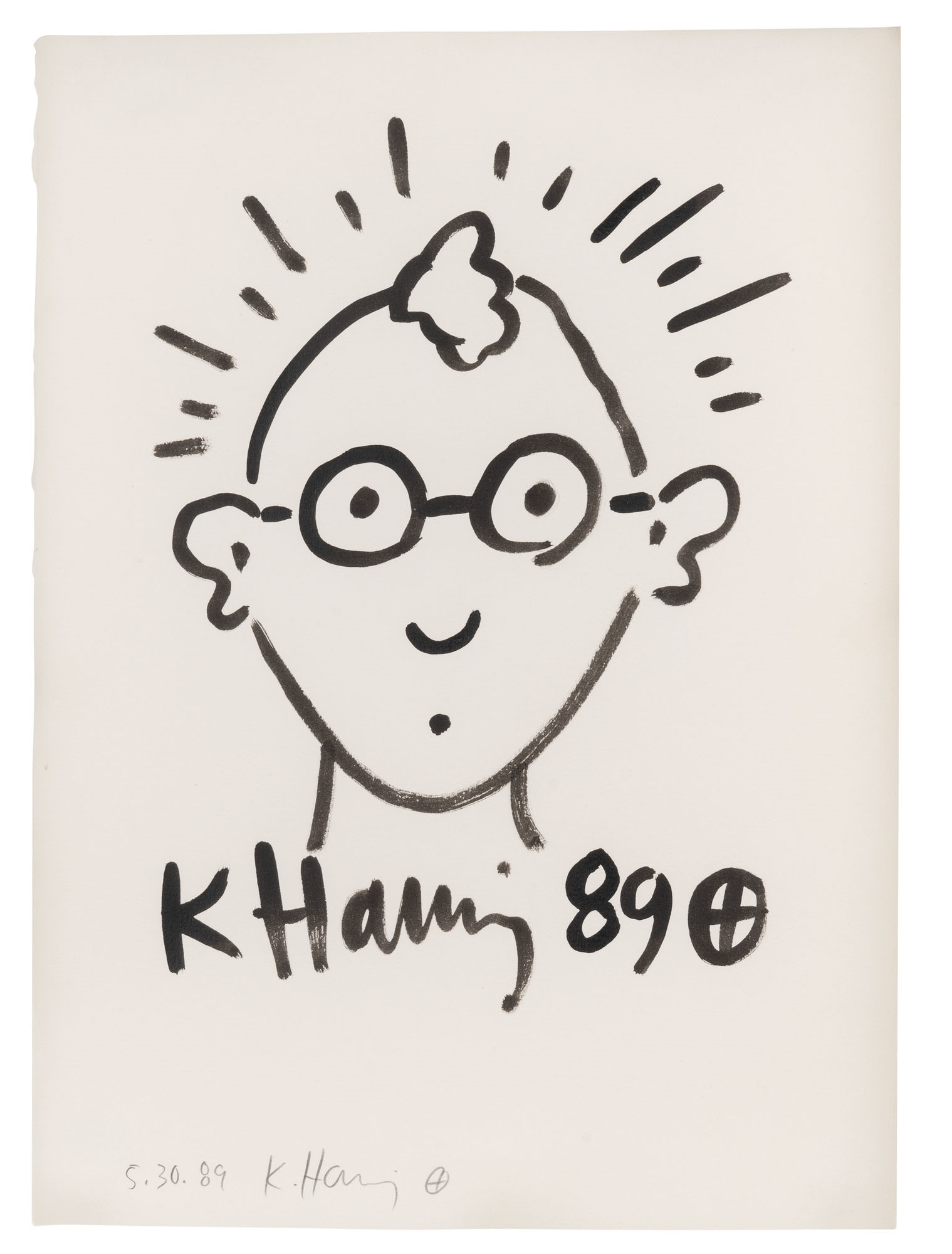
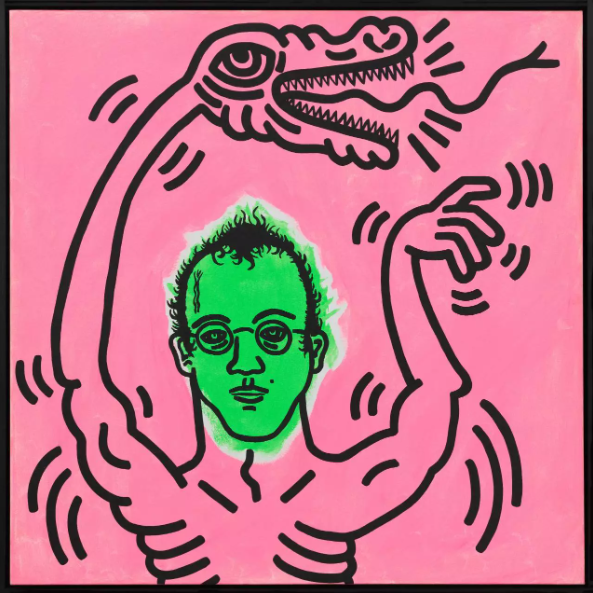
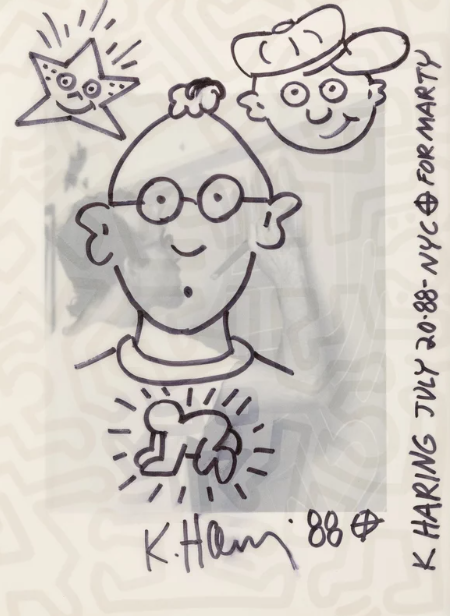
Keith Haring's Portrait By Others
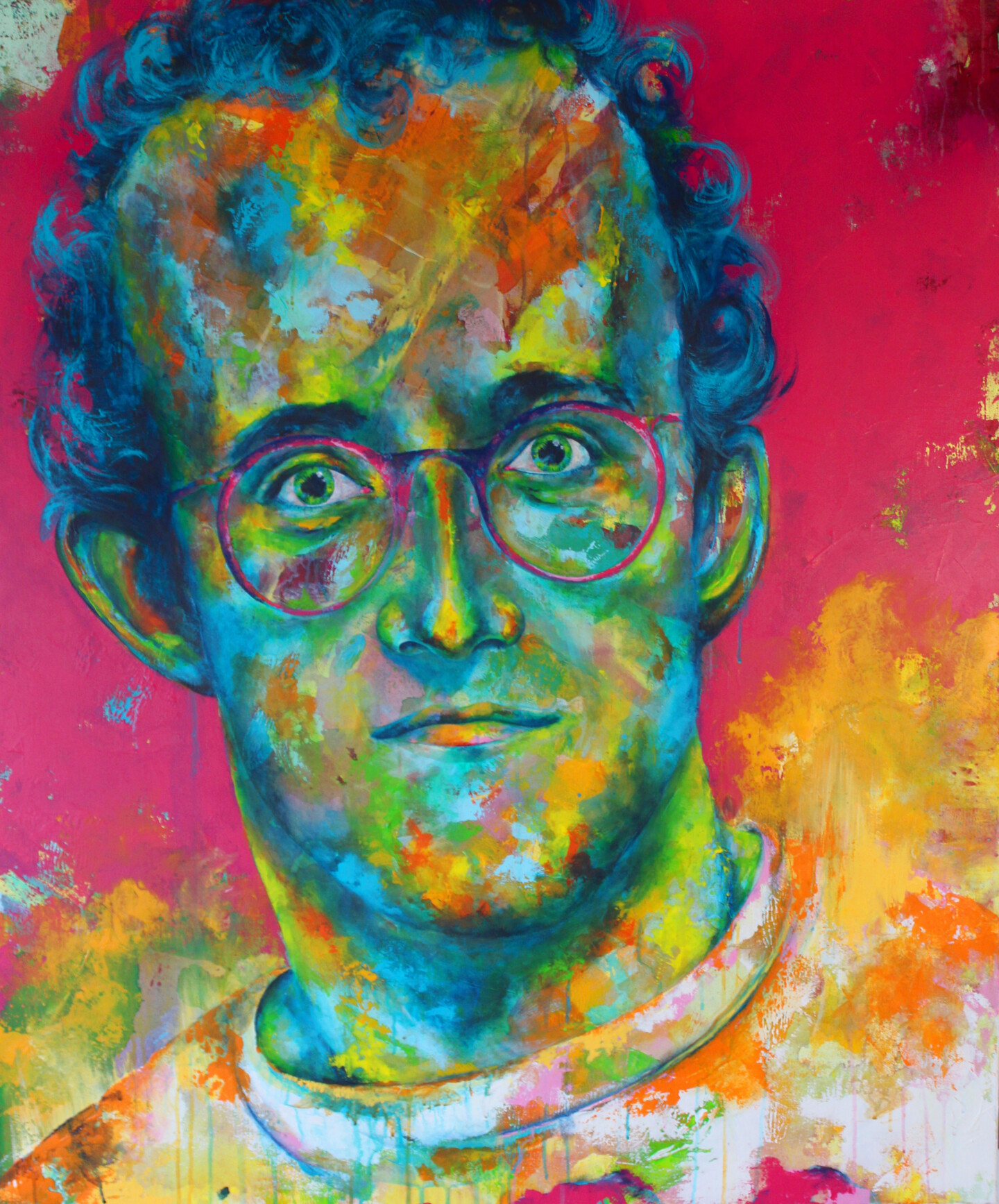
Keith Haring Painting by Kascho
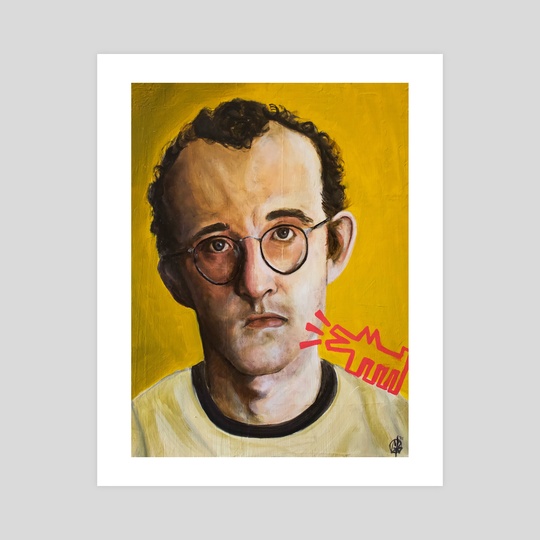
Keith Haring painting by Gabriel Paul Bustos

